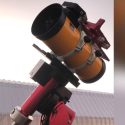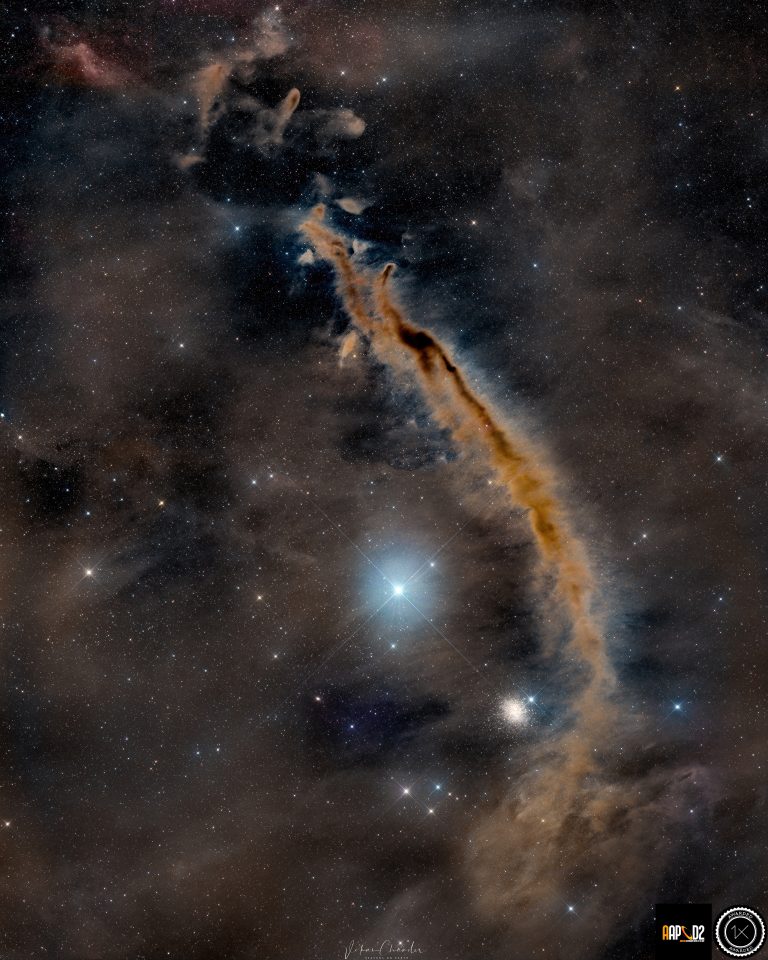Vikas Chander Astrophotography
The Millipede
also known as the Dark Doodad nebula
Telescope : Takahashi E160ed
Camera : ASI ZWO 6200mm Pro
Mount : Software Bisque Paramount MX+
Focal length : 528mm
Fov : 234 x 156 arcmins
Image Scale : 1.47 arcsec/pixel
Observatory : Deep Sky Chile
Filters: LRGB
L 120x5m R 60x5m G 60x5m B 60x5m
2 Panel Mosaic
Integration: 50h
RA: 12h33m08s
Dec : -71°39′15″

Out of all the possible types of targets one can image in deep space, dark nebulae intrigue me the most. They invoke feelings of mystique and dread, often ominous, and draws the mind’s eye towards what may lie in those dusty depths and beyond. Also known as absorption nebulae, they appear so because of sub-micrometre-sized dust particles, coated with frozen carbon monoxide and nitrogen, which effectively absorb and block the passage of light at visible wavelengths in space. Some parts of these nebulae are so dense that they completely block the light emanating from stars and nebulae behind them, creating what appears to the eye as huge voids of space. Their shapes are very irregular, having no clearly defined outer boundaries and sometimes take on convoluted serpentine shapes, as seen in this image In the obscure southern constellation of Muska lies a long dust cloud, spanning more than 6 degrees often referred to as the Dark Doodad. A search amongst various dictionaries refer to a Doodad as an ornament or electronic part whose name is forgotten. To my mind’s eye it looks more like a millipede floating in space and I prefer to call it such. Also seen is the bright blue star y Mus and the star cluster NGC 4372. I imaged this from the dark skies of Chile, with my fast Takahashi E160ed scope, which is located in a remote observatory, DeepSkyChile. This combination is best suited to bring out all the details of dark nebulae. To fit the entire form of this particular dark nebula, which spans over 6 degrees of the night sky I decided to do a 2 panel mosaic. Dark nebulae are notorious to image with any great semblance of detail as they are very faint and to mitigate this, each panel was set up for 25 hours of data acquisition, resulting in a total integration of 50 hours. I have also upgraded my filters to the Astronomik Deep Sky series which controls the halos of the stars very well, blue being particularly notorious in producing large halos around bright stars on fast scopes. Pixinsight offers some great tools for stitching mosaics and I made use of its capabilities to process the image to its current state, applying some final spit and polish in Photoshop.
© Vikas Chander All rights reserved Copyrights


